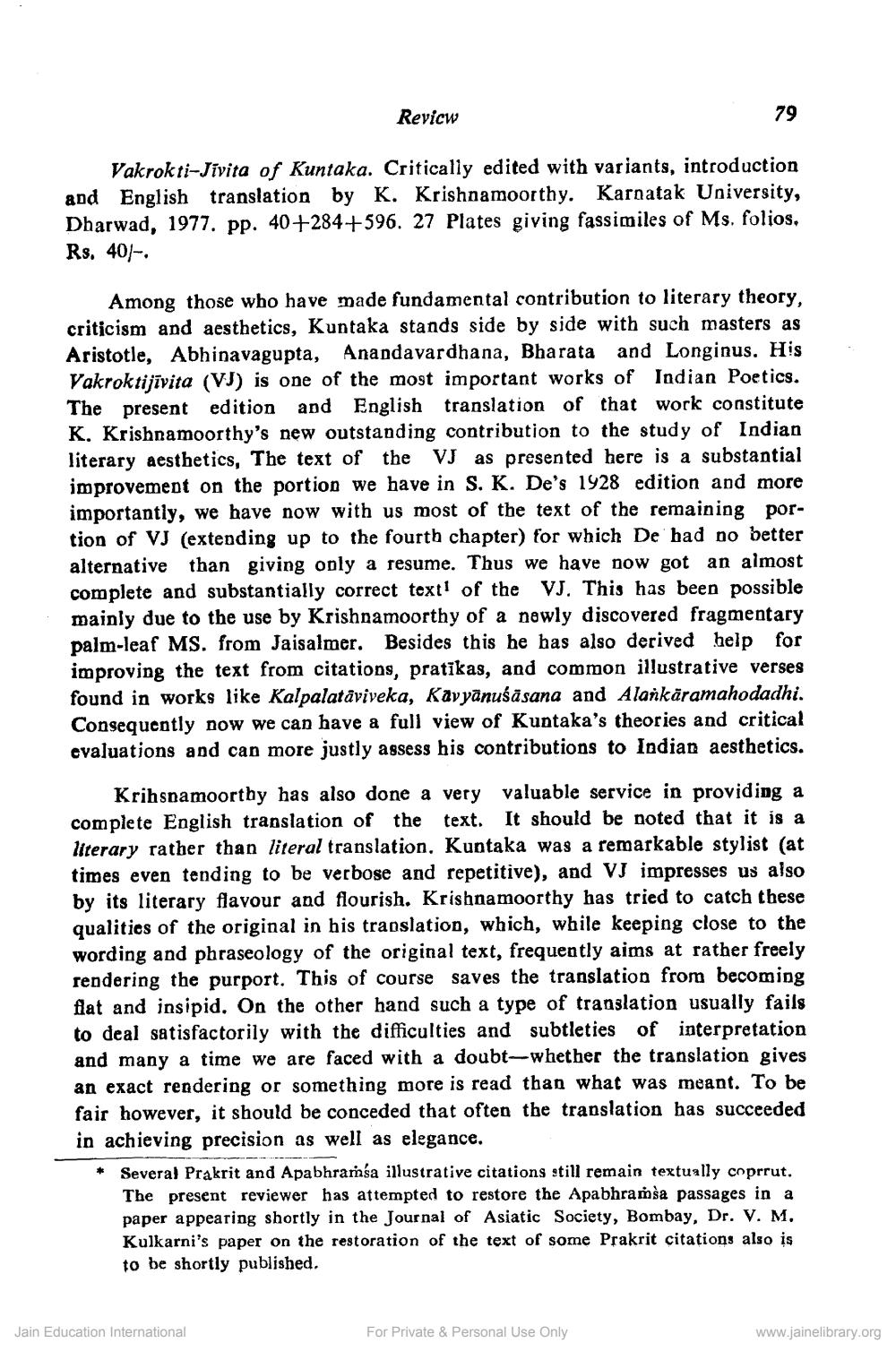________________
Revicw
Vakrokti-Jivita of Kuntaka. Critically edited with variants, introduction and English translation by K. Krishnamoorthy. Karnatak University, Dharwad, 1977. pp. 40+284+596. 27 Plates giving fassimiles of Ms. folios. Rs. 40/-.
Among those who have made fundamental contribution to literary theory, criticism and aesthetics, Kuntaka stands side by side with such masters as Aristotle, Abhinavagupta, Anandavardhana, Bharata and Longinus. His Vakroktijīvita (VJ) is one of the most important works of Indian Poetics. The present edition and English translation of that work constitute K. Krishnamoorthy's new outstanding contribution to the study of Indian literary aesthetics, The text of the VJ as presented here is a substantial improvement on the portion we have in S. K. De's 1928 edition and more importantly, we have now with us most of the text of the remaining portion of VJ (extending up to the fourth chapter) for which De had no better alternative than giving only a resume. Thus we have now got an almost complete and substantially correct text of the VJ. This has been possible mainly due to the use by Krishnamoorthy of a newly discovered fragmentary palm-leaf MS. from Jaisalmer. Besides this he has also derived help for improving the text from citations, pratīkas, and common illustrative verses found in works like Kalpalatāviveka, Kävyänuśāsana and Alankäramahodadhi. Consequently now we can have a full view of Kuntaka's theories and critical evaluations and can more justly assess his contributions to Indian aesthetics.
*
79
Krihsnamoorthy has also done a very valuable service in providing a complete English translation of the text. It should be noted that it is a literary rather than literal translation. Kuntaka was a remarkable stylist (at times even tending to be verbose and repetitive), and VJ impresses us also by its literary flavour and flourish. Krishnamoorthy has tried to catch these qualities of the original in his translation, which, while keeping close to the wording and phraseology of the original text, frequently aims at rather freely rendering the purport. This of course saves the translation from becoming flat and insipid. On the other hand such a type of translation usually fails to deal satisfactorily with the difficulties and subtleties of interpretation and many a time we are faced with a doubt-whether the translation gives an exact rendering or something more is read than what was meant. To be fair however, it should be conceded that often the translation has succeeded in achieving precision as well as elegance.
Jain Education International
Several Prakrit and Apabhraṁśa illustrative citations still remain textually coprrut. The present reviewer has attempted to restore the Apabhraṁsa passages in a paper appearing shortly in the Journal of Asiatic Society, Bombay, Dr. V. M. Kulkarni's paper on the restoration of the text of some Prakrit citations also is to be shortly published.
For Private & Personal Use Only
www.jainelibrary.org




